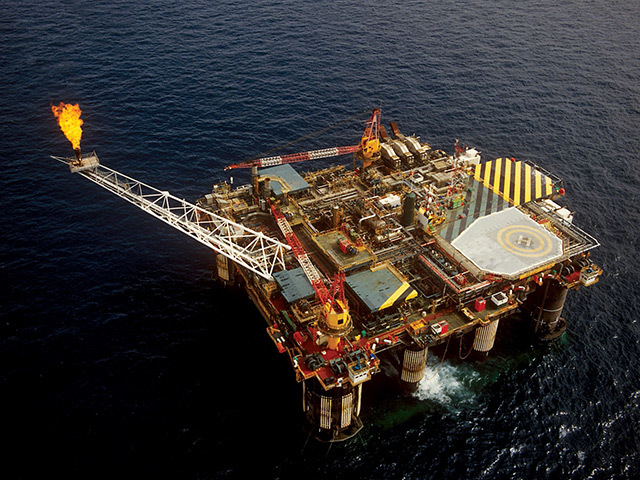
Ithaca Energy is just weeks away from achieving first oil on its landmark North Sea development.
The firm today confirmed it was still on track to recover the first hydrocarbons from its Greater Stella Area Development in November.
The project is located in the heart of the Central Graben area of the Central North Sea. It has more than 30 million barrels of oil equivalent of net proven and probable reserves.
A company spokesperson said: “Good progress has been made on the final stages of the Stella development programme since the FPF-1 floating production facility set sail from Poland in August 2016.
“The FPF-1 was safely towed to the field, moored on location and the dynamic risers and umbilical connecting the subsea infrastructure to the vessel installed as planned. Technip is in the process of concluding the remaining subsea commissioning works. At the same time the FPF-1 offshore commissioning programme is on-going, with preparation of the topsides processing and utility systems for the introduction of hydrocarbons underway. The scheduled completion of these activities remains in line with previous guidance, with first hydrocarbons from the Stella field anticipated in November 2016.
“Significant progress was also made during the Quarter on the work programme associated with making the switch from tanker loading to oil pipeline exports for the Greater Stella Area in 2017. The 44 kilometre spurline from the FPF-1 to the Norpipe system was successfully installed as planned in September 2016. The key outstanding activities that now remain to be completed are the manufacture and installation of pipeline export pumps on the FPF-1 and the final subsea connections that need undertaking immediately prior to the switchover.”
Once on line, Ithaca said its operating expenditure will drop from $25boe to $20boe – thanks to lower unit operating costs associated with the field.
Elsewhere, the firm achieved 9,550boepd average production for the first nine months of the year – an increase on its 9,000boepd guidance.
Ithaca has also reduced its debt to $598million.
A spokesperson added: “The company has in place total available debt facilities of $730million, providing in excess of $130million of funding headroom ahead of planned first hydrocarbons from the Stella field. This funding capacity comprises $300million unsecured senior notes and $430million bank debt facilities.”
Greater Stella includes the development of the Stella and Harrier fields, including subsea wells tied back to the “FPF-1” floating production unit, with the onward export of oil and gas.
“To maximise initial oil and condensate production and fill the gas processing facilities on the FPF-1, the hub will start-up with five Stella wells. Further wells will then be drilled in the GSA post first hydrocarbons to maintain the gas processing facilities on plateau,” according to the company.
Dyas and Petrofac are both joint venture partners on the field. The Petrofac transaction included the transfer of an ownership interest in the “FPF-1” floating production facility to Ithaca and Dyas, while granting Petrofac a right to earn a 20% interest in the Stella and Harrier fields and the transfer of a 20% interest in the Hurricane discovery.
